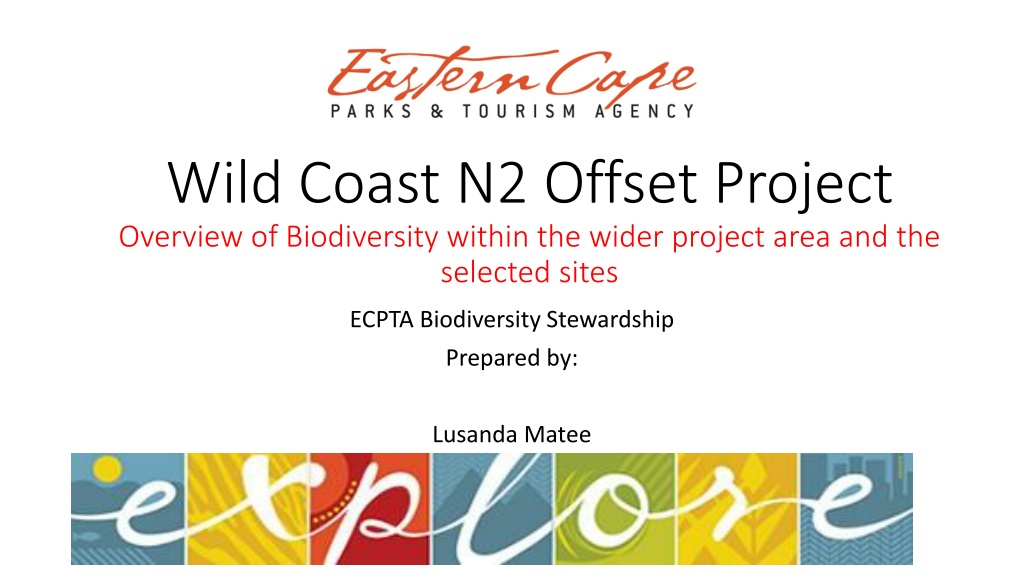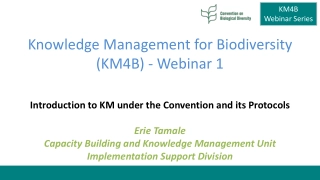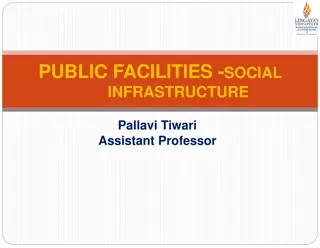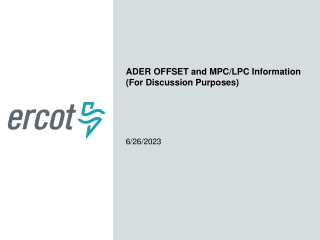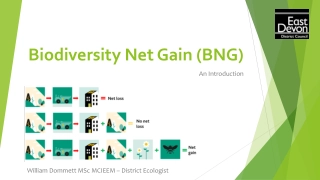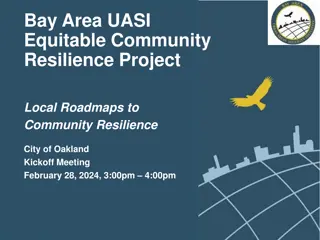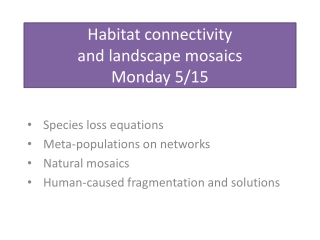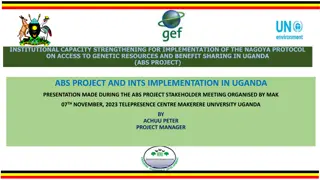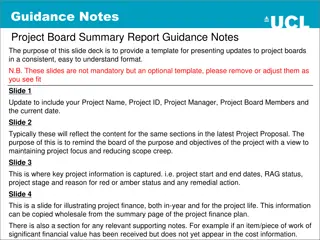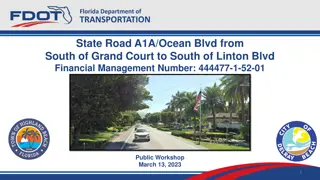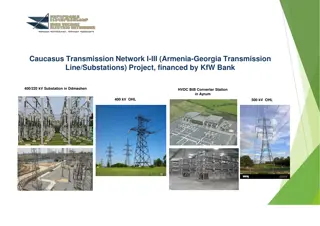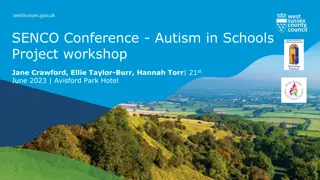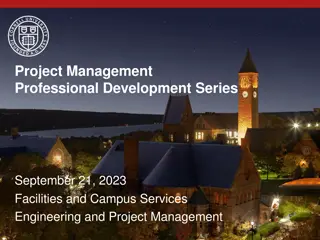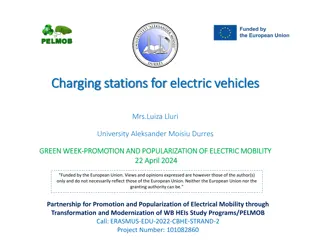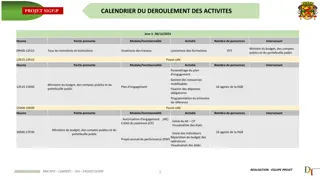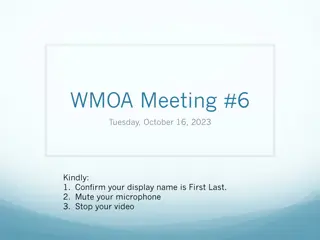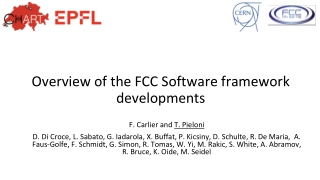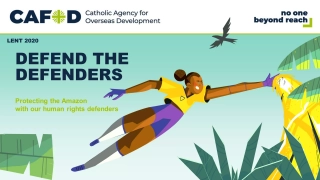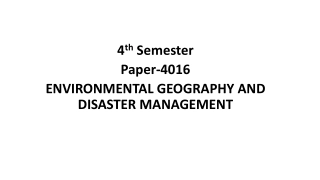Wild Coast N2 Biodiversity Offset Project Overview
In 2014, SANRAL initiated the N2 Wild Coast Biodiversity Offset project to conserve biodiversity in selected sites along the Wild Coast region. The project aims to protect and promote the unique biodiversity of these areas without introducing new species or disrupting local communities. Through active management and sustainable resource utilization, the goal is to ensure conservation for future generations. The project focuses on remnant areas with specific vegetation types and ecosystems, such as indigenous forests and coastal habitats. Protected Areas play a crucial role in safeguarding South Africa's biological diversity and natural landscapes, ensuring ecological integrity and sustainable use of resources.
Download Presentation
Please find below an Image/Link to download the presentation.
The content on the website is provided AS IS for your information and personal use only. It may not be sold, licensed, or shared on other websites without obtaining consent from the author. Download presentation by click this link. If you encounter any issues during the download, it is possible that the publisher has removed the file from their server.
Presentation Transcript
Wild Coast N2 Offset Project Overview of Biodiversity within the wider project area and the selected sites ECPTA Biodiversity Stewardship Prepared by: Lusanda Matee Explore Eastern Cape
In 2014 SANRAL commissioned a study to identify appropriate areas for the N2 Wild Coast Biodiversity Offset project and Botha and Brownlie were tasked with undertaking this study. They identified and prioritised five candidate sites ( Lambasi, Mkambati-TRACOR, Caguba and Mt Thesiger, Mateku Fall and Gorge and Ntsubane), in which the planned offset project can be implemented. They further highlighted two additional sites between Mthentu and Umtamvuna rivers. The project identified and prioritised sites based on being remnant areas across the Wild Coast that are the same types of vegetation types, ecosystems or habitat that are being impacted by the N2 Wild coast project. The project does not seek to bring in any new species or potentially dangerous wildlife to the selected areas nor does it seek to take away land from the communities The aim of the project is to conserve the unique biodiversity within these areas and promote the utilisation of resources in such a way that it allows those resources and other ecosystem services to continue existing for the next generation in future. The ultimate goal would be able to reach a win-win situation where people are engaged in active management of the Protected Areas they live next to through management according to clear management plans and exploring allowing them sustainable access to resources as an option Brief project background Explore Eastern Cape
A Protected Area can be defined as an area of land and/or sea specifically dedicated to the protection and maintenance of biological diversity and o0f natural and associated cultural resources and it must be managed through legal means The purposes of proclaiming an area as a Protected Area is defined within Section 17 of National Environmental Management: Protected Areas Act (NEMPAA). There are various forms of protected areas, one of which is a Protected Environment. The purpose of a protected area is to protect ecologically viable areas representative of South Africa s biological diversity and natural landscapes, preserve the ecological integrity, biodiversity, environmental goods and services, sustainable use of natural resources, augment destinations for nature-based tourism amongst other purposes. Defining a Protected Area Explore Eastern Cape
Biodiversity can be simply described as a variety of plant and animal species which comes about primarily as the result of a wide range of climatic conditions, pedology, geology, and topographic variation, which give rise to relatively distinctive biomes, each with characteristic plant and animal species Overview of the unique Biodiversity in the sites The N2 Biodiversity project area and it s selected sites falls within the Maputaland Pondoland Albany Hotspot which is a region of high biodiversity and endemism. It has a high percentage of globally threatened terrestrial and aquatic species but this presentation will focus largely on the terrestrial diversity within the area. The project area is relatively well endowed with indigenous forest and their associated species such as Pondoland coastal forest which Occurs on sandstone outcrops, with rich variety as well as Coastal scarp Forests which are transitional between mistbelt and coastal, south and east facing slopes, granite outcrops and dolerite dykes e.g. above Mngazi river valley. These coastal scarp forests are habitat to rare and endemic birds and mammals.
Floral Biodiversity There are approximately 20,000. plant species are found in South Africa an astonishing 10% of all plants found on Earth. Based on the Plants of Southern Africa (BODATSA-POSA, 2019) database there are 4,208 expected species in the areas pre-selected for the N2 Biodiversity offset project, this is approximately 21 % of the plant species found in South Africa which shows the exceptional biodiversity found in the area. Of these 4,208 expected species: 3489 Indigenous species 1973 Endemic Species 128 Protected Species (154 When you include Data Deficient species)
Avifaunal Diversity Bird distribution data from the Southern African Bird Atlas Project 2 (SABAP 2) was obtained (http://sabap2.adu.org.za/), in order to ascertain which species, occur in the pentads where the proposed N2 Biodiversity project is located or rather proposed. A pentad grid cell covers 5 minutes of latitude by 5 minutes of longitude (5' 5'). Each pentad is approximately 8 7.6 km. To get a more representative impression of the birdlife, a consolidated data set was obtained for a total of 20 pentads which intersect the wider area of all the selected sites. Based on the data obtained from this a total of approximately 220 bird species occur in the selected areas combined.. This is approximately 26 % of the bird species found in South Africa (South Africa is rich in birds with 856 bird species recorded in the region, including the Prince Edward Islands). This includes a number of South African Red List species that are threatened or protected
Avifaunal Species of Concern Some of the avifaunal (Bird species) of conservation concern include: Cape Griffon/ Cape Vulture (iDlanga/iXhalanga) (Gyps coprotheres) Denham's Bustard (iSeme) (Neotis denhami) The Cape parrot (Poicephalus robustus) The Grey Crowned Crane (iHemu) (Balearica regulorum) Mangrove Kingfisher (iSaxwila) (Halcyon senegaloides) Martial Eagle(Ukhozi) (Polemaetus bellicosus) Verreaux's Eagle (Ukhozi/Untsho)(Aquila verreauxii) African Grass Owl (isiKhova) (Tyto capensis) Explore Eastern Cape
Mammal Diversity The MammalMap Spatial Data for the quarter degree squares (QDS) in which the site occurs lists over 50 mammal species that could be expected to occur within the area. Eleven (11) of these expected species are regarded as Species of Conservation Concern (SCC ).
